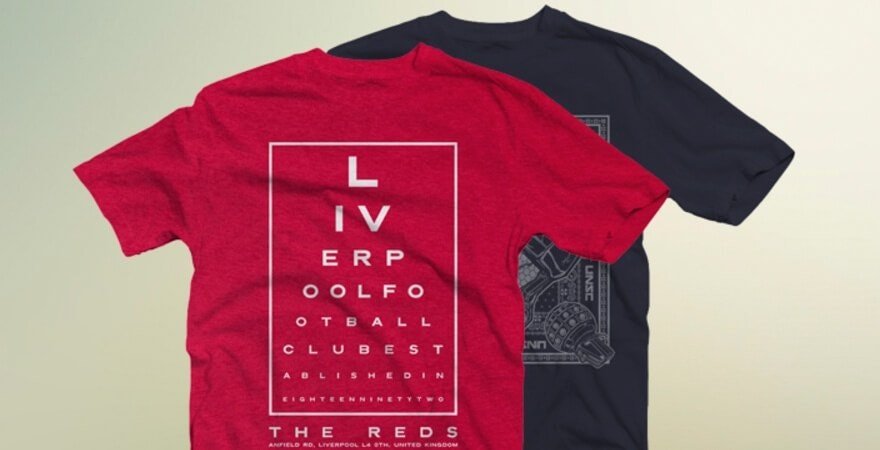Struggling to decide between print on demand vs. dropshipping? Well, you’re not alone. Many entrepreneurs find themselves at this crossroads.
On one hand, print on demand lets you sell your own custom products. On the other, dropshipping gives you a whole catalog of items you can offer.
In both cases, the supplier ships products directly to your customers on your behalf.
So, what’s the right choice for your entrepreneurial journey? This article will cover the key aspects of both print on demand and dropshipping to help you make an informed decision.



What is print on demand (POD)?
Print on demand (POD) is when you sell your own custom designs on various different types of products. Print on demand products include t-shirts, hoodies, books, and many other items. Like any business model, print on demand (POD) has its own set of pros and cons, which we’ll discuss below.

→ Click Here to Launch Your Online Business with Shopify
Print on demand pros
Print-on-demand dropshipping is a great business model for entrepreneurs young and old. Here are some advantages you stand to gain by choosing this business model.
Create your own products
It can be a pretty cool feeling to have someone buy a product that you designed yourself. Most print-on-demand companies allow you to create your own items like t-shirts, mugs, and engraved jewelry. Not only can you create your own products, but you can also build a strong brand that people can identify with. If you’re a graphic designer or a creative person, starting a print-on-demand business can be a fun and rewarding experience.
Build your own brand
Not only can you create your own products, you can also create a brand image that people can identify with. For instance, printing your logo on the back of your mug or t-shirt is a great way to promote your identity. You can even launch a unique clothing line, then find manufacturers to up your game once you have made a lot of sales in POD to help increase your margins.
Benefit from faster shipping
Compared to regular dropshipping, POD dropshipping gives you the advantage of working with US and European suppliers. That’s because the best POD companies are based in these regions. Offering good communication and fast deliveries, these companies allow POD stores to boost conversions and loyalty.
Cross-sell and upsell easily
Print-on-demand dropshipping offers lower shipping costs when you buy more products. For example, you can cross-sell and upsell items to keep costs low. For example, you can sell a cap to customers who buy a t-shirt from your website. Another option is to bundle products to make them attractive for the customer to buy, such as offering three t-shirts for the price of two and even throwing in a gift. These kinds of things can help increase your average sales and revenue.
Explore custom packaging
While most print-on-demand suppliers don’t allow you to design your own boxes or add marketing inserts into your packages, some allow you to add your logo on a receipt or a sticker for your package. This can be helpful in building your print-on-demand business.
Keep cash flowing
If you set your prices right and choose the right dropshipping suppliers offering POD services, you can sell products at a good margin. Of course, product costs and shipping costs are two different things, so you’ll need to calculate your prices very carefully to generate good cash flow.
Sell products on various channels
If you create an online store with Shopify, you can sell your POD products to consumers directly. It’s also possible to engage in social selling by listing your items on Instagram and Facebook. Have customers who shop frequently via Amazon? Use Shopify’s Amazon sales channel to sell directly on the marketplace. Essentially, you can sell across channels and get more eyeballs on your products, which can bring you your first sale faster.
Print-on-demand cons
There are a few issues with the print-on-demand business model. Here are a few examples:
Expensive shipping
Shipping rates for print-on-demand services are often steep. Given that most customers prefer free shipping, offering it on your store can be vital. However, covering the cost of shipping, especially when suppliers are based in the US, can significantly reduce your profit margin. International shipping only amplifies this issue, making it difficult to sustain the business over the long term.
High product cost
While print on demand offers the benefit of custom designs, the costs can be prohibitive for a business. For example, on Printful, the base price for a mug is $7.95. Adding worldwide shipping for $16.95 brings the total cost to $25.90 for just one mug. This doesn’t even include the retail markup you’ll need to add to earn a profit, let alone additional costs like marketing and salaries.
What is dropshipping?

Dropshipping is an online business model that allows you to sell a variety of products without the need for physical storage. Once you make a sale, your dropshipping suppliers will arrange, pack, and ship the products to your customers. This approach has its unique benefits and drawbacks, which we’ll examine in detail below.
Dropshipping pros
Dropshipping is a great business model for new entrepreneurs. Here are some of its benefits:
Quick and easy setup
Starting a dropshipping business is simple. You add products and write descriptions. Next, you market those products. Then, you manage orders and customer support. That’s your routine. This setup is far less complicated than print-on-demand. No need to create your own designs or product mockups. The process moves faster and smoother.
Vast product range
Choice is king in dropshipping. Dropshipping companies offer a vast selection of products. You can stock your ecommerce business with trending items or classics. Want to sell different styles of dresses? You can. The flexibility is there. This diversity helps your store appeal to a broader audience.
Metrics matter: Identify your bestsellers
Data drives a dropshipping business. You can see which products are popular based on real metrics. Look at order volume, seller ratings, and customer reviews. This data lets you make informed decisions. You’re not guessing which items will sell. You know.
Low shipping costs
Shipping can be a deal-breaker for customers. Dropshipping wins here too. Many dropshipping suppliers offer cheap shipping options, like ePacket. Often, shipping costs are free or less than $5. This low cost makes it easier to offer free shipping to customers. In the end, your profit margins look better.
Lower risk, better business
Lower business risk is another key advantage of dropshipping over print on demand. Data from dropshipping suppliers helps you choose high-quality products. You can look at seller ratings and customer reviews. With this info, you’re more likely to pick winners for your ecommerce business. You take fewer risks and make smarter choices.
Dropshipping cons
Like most business models, dropshipping also has a few drawbacks:
Product quality issues
One significant downside of running a dropshipping business is the variable product quality. While some dropshipping suppliers offer high-quality goods, others may not meet the same standards. A savvy approach for a dropshipping store is to stick with suppliers known for high order volumes and solid reviews. Doing so helps to mitigate risks, with many dropshipping stores reporting refund rates of only 1% to 2%.
Longer shipping times
Another issue that dropshipping businesses often face is extended shipping durations. This is especially true when the dropshipping supplier is based overseas. However, some suppliers are opening warehouses in more local regions, like the US and Canada, to improve shipping times. Using specialized apps, a dropshipping store can easily identify the shipping origins of products, making inventory selection more straightforward.
Print on demand vs. dropshipping: similarities

While print on demand and dropshipping have several defining differences, they also share a lot in common. Here are a few examples:
- They both involve dropshipping. No bulk inventory to carry. The supplier packages and ships products out directly to your customer.
- Order processing is mostly automated. When a customer places an order, all you need to do is click a button to send customer product details to your supplier.
- A print-on-demand business and dropshipping are both low-risk models. You don’t need to buy inventory upfront and only pay once a customer places an order on your store.
- Both require a similar skill set to achieve great results. A print-on-demand business requires more creative thinking. However, both require marketing, customer service, and advertising skills.
If you’re both creative and business-minded, you can combine print on demand with dropshipping. This way, you can offer a wider range of products and be more competitive, which can lead to a more profitable business
Choosing between print on demand and dropshipping
Both dropshipping and print on demand are profitable business models. However, they vary in terms of the time it takes to see a return on investment (ROI).
Dropshipping often yields quicker profits. Why? Shipping costs are generally lower. This allows you to offer free shipping to customers. You can also set competitive prices without hurting your bottom line. As a result, your business is more likely to generate sales.
Print on demand, meanwhile, is a long-term business strategy. It requires an upfront investment in quality designs and brand building. As the brand grows and gains loyalty, the opportunity for selling on multiple platforms arises, potentially leading to substantial profits over time.
So, dropshipping is generally better for quick profits, while print on demand can be more profitable in the long run. The best choice depends on what you’re looking to achieve with your business.





